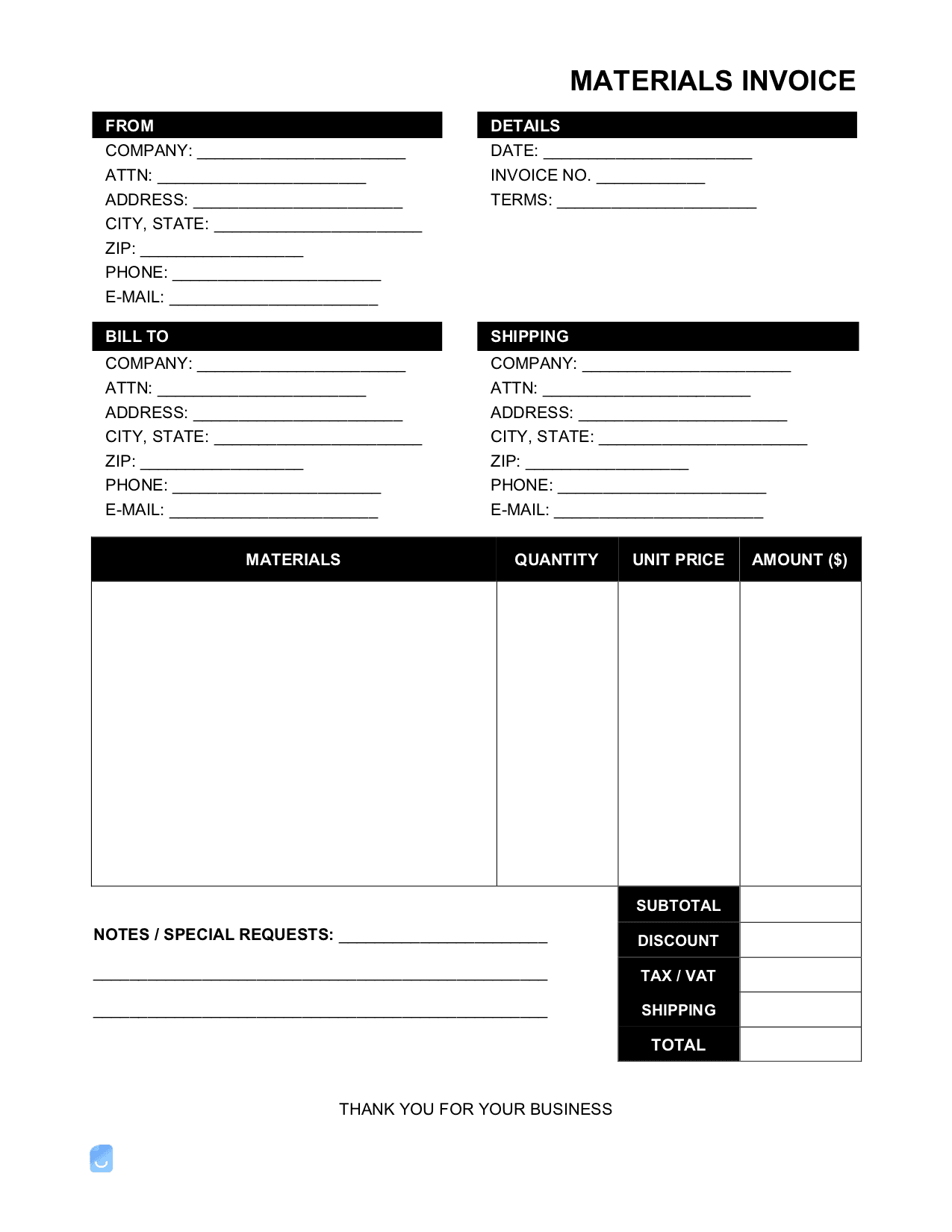Materials (ONLY) Invoice Template
A materials invoice is used for billing consumer and commercial customers solely for parts, construction components, or raw goods used for manufacturing, repair, or other industrial/business purposes. An invoice for materials can be issued on its own or attached to a labor invoice. Labor and Materials Invoice – An all-in-one invoice used for charging customers both the hours spent on a job and the materials allocated for completing it.

What are Raw Materials?
Raw materials are the essential building blocks for production. They are found in nature and are mainly classified into three (3) categories: animal, vegetal, and mineral. Examples of raw materials from each category are given below.
Animal: Leather, oils, shell, dentin, feathers, and silk.
Vegetal: Wood, linen, grain, and cork.
Mineral: Titanium, stainless steel, granite, and quartz.
When describing material types, the term “materials” as a whole can be used to classify a wide range of artificial materials in addition to the basic forms listed above, including parts, gears, paint, paper, concrete, textiles, and plastic.
Types of Materials
In accounting terms, companies classify materials as either indirect or direct, based on where/how they are used in the manufacturing process.
- Indirect materials – A business will classify a material as indirect if not included in the final product. The indirect material used cannot typically be traced to an individual product, as indirect materials can include lightbulbs, gloves, oils, and glue.
- Direct materials – Materials that are considered direct can be traced to the final product. Examples include a spring used to make a toy, cement in a building, or chocolate chips baked into a cookie.